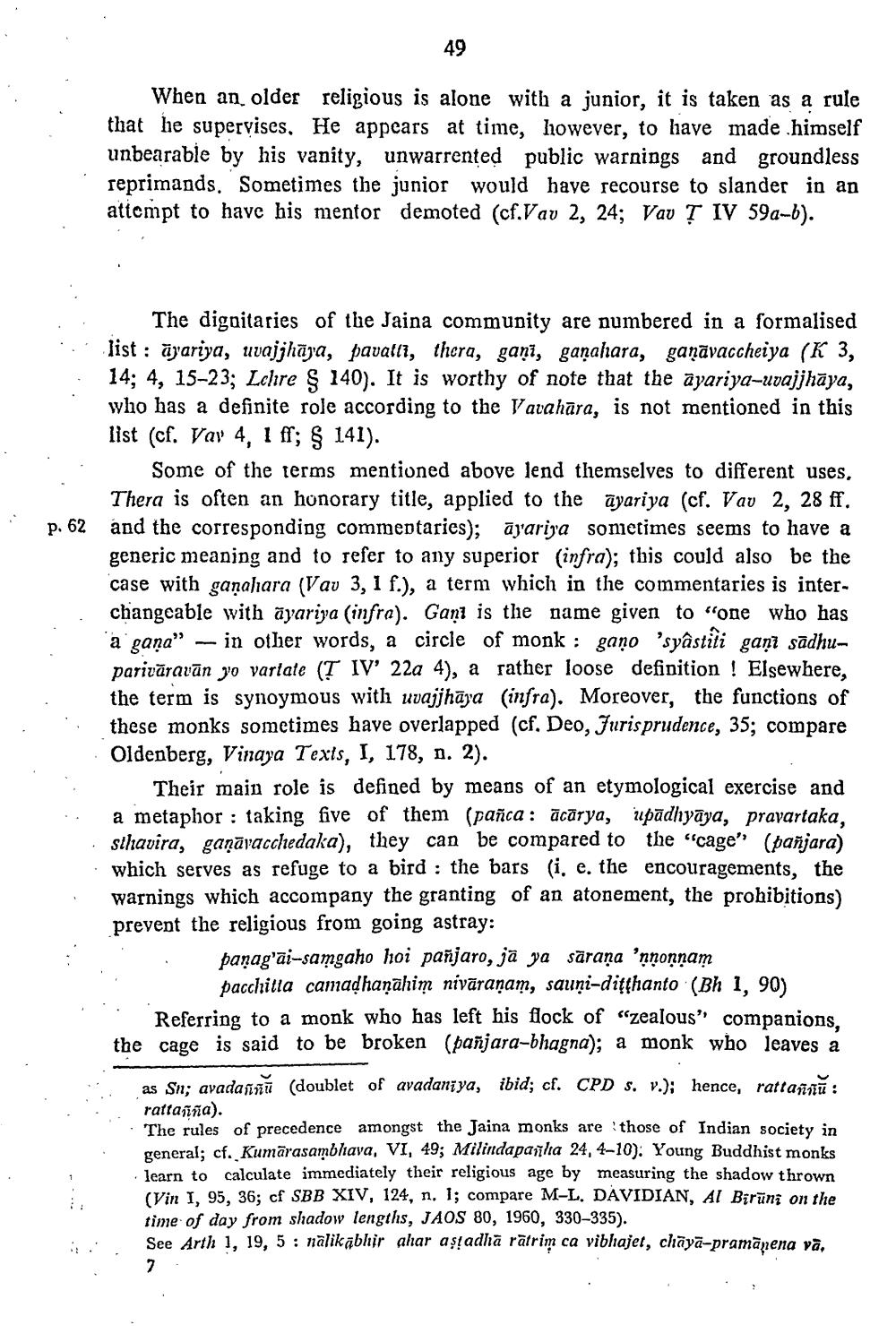________________
49
When an older religious is alone with a junior, it is taken as a rule that he supervises, He appears at time, however, to have made himself unbearable by his vanity, unwarrented public warnings and groundless reprimands. Sometimes the junior would have recourse to slander in an attempt to have his mentor demoted (cf.Vav 2, 24; Vav T IV 59a-b).
The dignitaries of the Jaina community are numbered in a formalised list: ayariya, uvajjhāya, pavatti, thera, gani, ganahara, gaṇāvaccheiya (K 3, 14; 4, 15-23; Lehre § 140). It is worthy of note that the ayariya-uvajjhāya, who has a definite role according to the Vavahara, is not mentioned in this list (cf. Vay 4, 1 ff; § 141).
Some of the terms mentioned above lend themselves to different uses. Thera is often an honorary title, applied to the ayariya (cf. Vav 2, 28 ff. p. 62 and the corresponding commentaries); ayariya sometimes seems to have a generic meaning and to refer to any superior (infra); this could also be the case with ganahara (Vav 3, 1 f.), a term which in the commentaries is interchangcable with ayariya (infra). Gant is the name given to "one who has a gana" - in other words, a circle of monk: gano 'syâstiti gani sadhuparivaravan yo vartate (T IV' 22a 4), a rather loose definition! Elsewhere, the term is synoymous with uvajjhaya (infra). Moreover, the functions of these monks sometimes have overlapped (cf. Deo, Jurisprudence, 35; compare Oldenberg, Vinaya Texts, I, 178, n. 2).
Their main role is defined by means of an etymological exercise and a metaphor: taking five of them (pañca: ācārya, upadhyāya, pravartaka, sthavira, gaṇāvacchedaka), they can be compared to the "cage" (pañjara) which serves as refuge to bird the bars (i, e. the encouragements, the warnings which accompany the granting of an atonement, the prohibitions) prevent the religious from going astray:
panag'ai-samgaho hoi panjaro, ja ya sarana 'nnonnam
pacchilla camaḍhanṇāhim nivāraṇam, sauni-diṭṭhanto (Bh 1, 90)
Referring to a monk who has left his flock of "zealous" companions, the cage is said to be broken (pañjara-bhagna); a monk who leaves a
as Sn; avadaññu (doublet of avadaniya, ibid; cf. CPD s. v.); hence, rattaññй: rattajina).
The rules of precedence amongst the Jaina monks are those of Indian society in general; cf. Kumarasambhava, VI, 49; Milindapanha 24, 4-10). Young Buddhist monks learn to calculate immediately their religious age by measuring the shadow thrown (Vin I, 95, 36; cf SBB XIV, 124, n. 1; compare M-L. DAVIDIAN, Al Biruni on the time of day from shadow lengths, JAOS 80, 1960, 330-335).
See Arth 1, 19, 5 nalikabhir ahar aṣṭadhā rātrim ca vibhajet, chaya-pramāņena vā,
7




